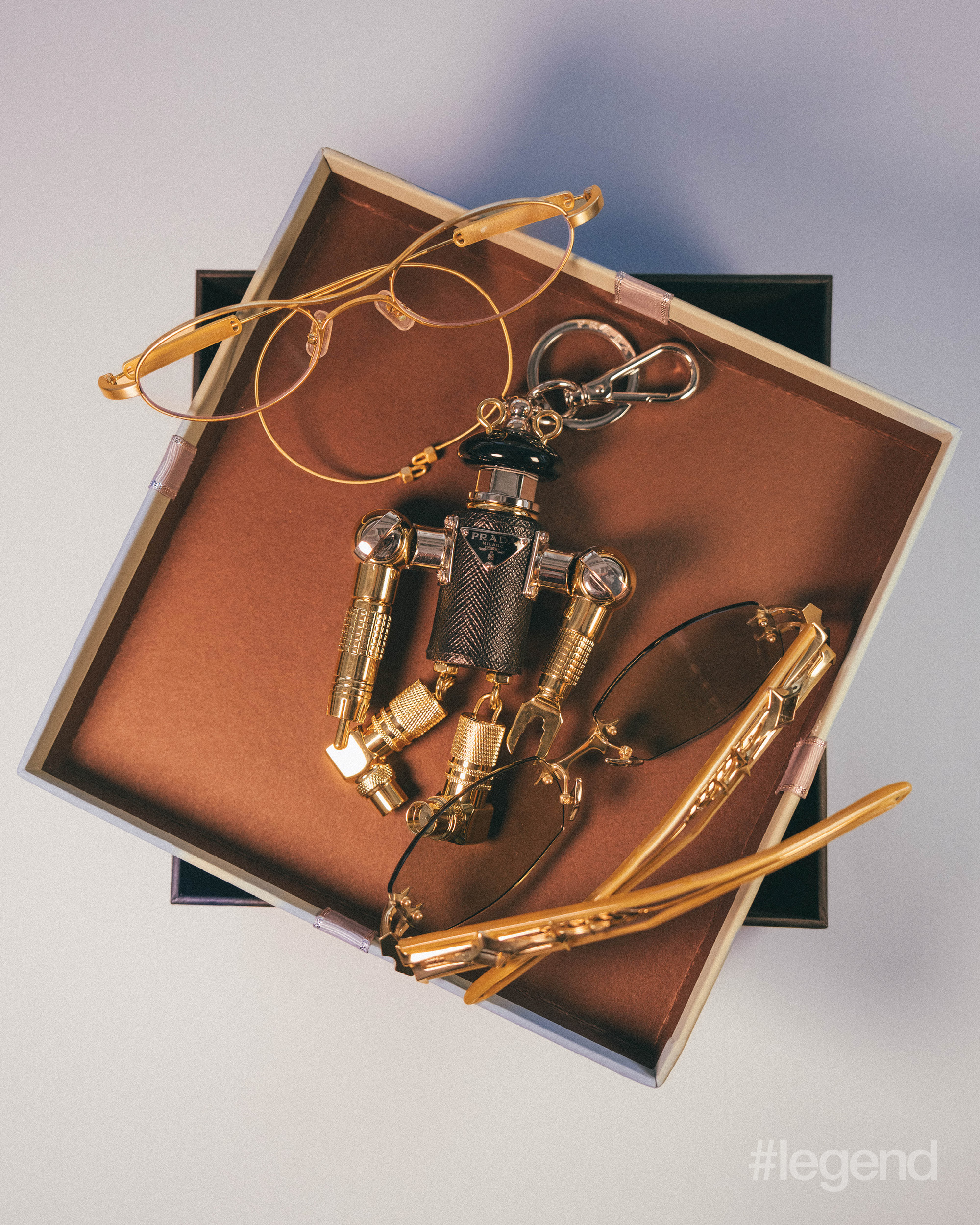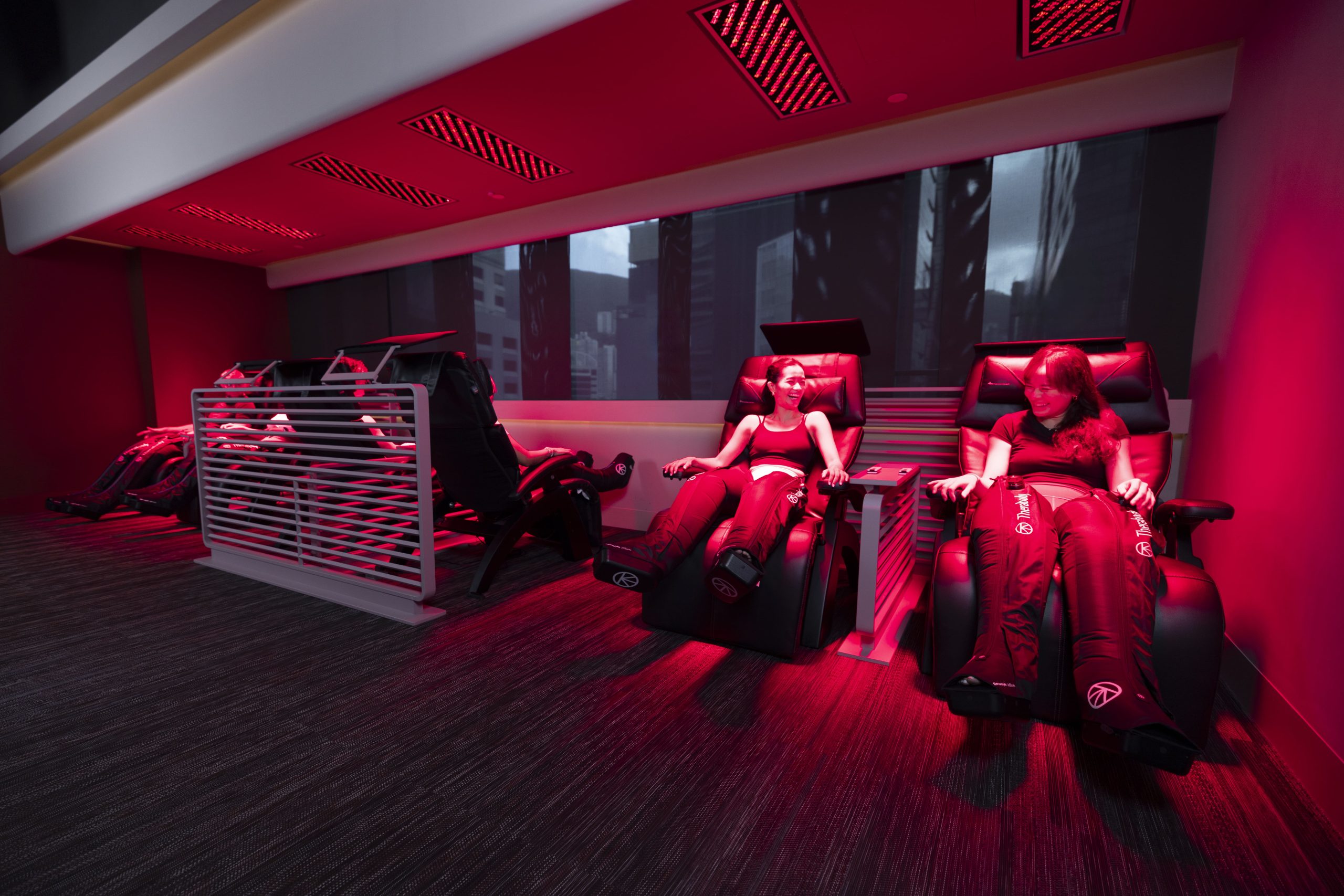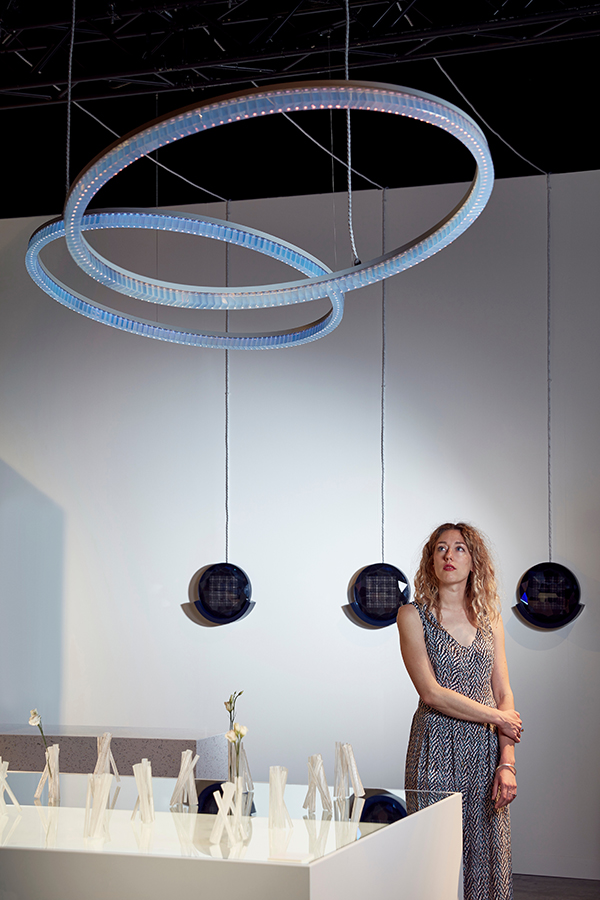
Art Central returns to the city for its fourth iteration. Taking centre stage once again at the main entrance of Hong Kong’s premier satellite art fair is Swarovski and its chosen collaborator – this year it’s pioneering Dutch solar designer Marjan van Aubel and her remarkable cyanometer. The project first saw the light of day as part of the Swarovski Designers of the Future award, showcased at Design Miami/Basel in 2017.
Van Aubel’s innovative lighting design incorporates a portable solar cell with a custom-made Swarovski crystal, which enhances the harvesting of the sun’s energy. The stored energy is then used to power the light sources of the cyanometer. In addition to the three originals, measuring 120cm in diameter, Swarovski is showing six new versions: three with 75cm diameters and three with 50cm diameters.
But what exactly is a cyanometer? “It was originally an instrument for measuring the ‘blueness’ of the blue sky,” says Van Aubel. Invented by Horace-Bénédict de Saussure and Alexander von Humboldt in 1789, it consists of squares of paper dyed in graduated shades of blue, then arranged in a colour circle or square that can be held up and compared to the hue of the sky. “Alongside crystal expert Swarovski, we created a modern version of the cyanometer – a work that uses crystals to make solar cells more efficient,” she explains. “By cutting the glass in certain angles, the light is refracted in a way that focuses more intensely on the solar cells, increasing its efficiency.”
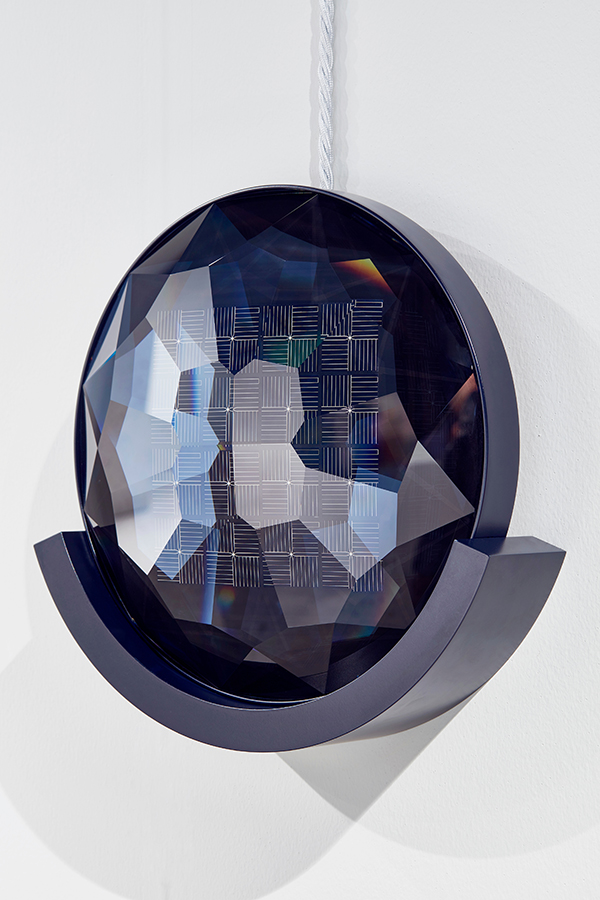
All of which means the eye-catching portable solar crystal harvests light during daylight hours; once placed in a docking station, it powers a light installation that “gives the sensation of ‘taking the sky indoors’.” The ring-shaped installation comprises opals, which scatter light in the same way the sky does.
Naturally, the backing of one so luminary as Nadja Swarovski has been hugely advantageous. “I was able to work with Swarovski’s crystals and all their expertise,” says Van Aubel. “They were very generous with knowledge and resources.” The designer has harboured ambitions to create a solar chandelier for some time and she thinks this “resulted in a piece with a lot of eye for details.” It’s also a high-key project. “The combination of crystal and solar power has the potential to be incredibly beautiful and forward-thinking,” she says.
Van Aubel’s practice spans the fields of science and chemistry. Her research process blends scientific precision with sensory responsiveness to develop aesthetic solutions for the future, using innovative materials such as foam porcelain and integrated solar cells based on the properties of colour. She has exhibited at the V&A, the Boijmans van Beuningen Museum in Rotterdam and the Design Museum in London, where she has been twice nominated for the Design of the Year Award. Van Aubel’s work is part of the permanent collection of the Vitra Design Museum and MoMA New York. Among her many accolades, she’s won the DOEN Materiaalprijs, the ARC13 Chair Award and the Kortrijk Interieur Award, and was shortlisted for the Arts Foundation Material Innovation Award. She was also awarded the Swarovski Emerging Talent Medal during the London Design Festival 2015.
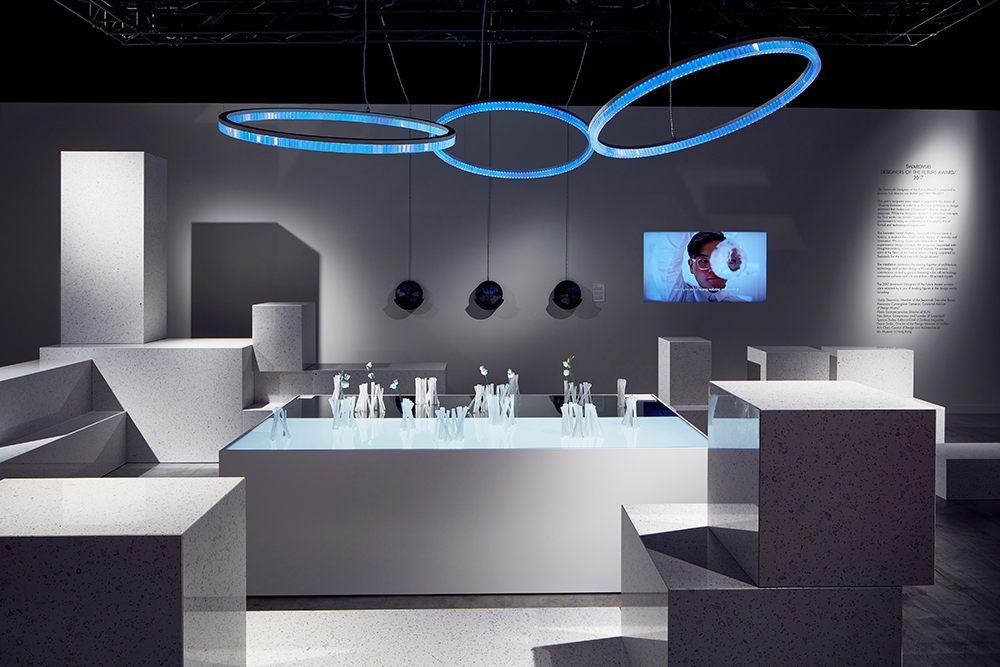
Among Van Aubel’s design influences are visual artists James Turrell, Olafur Eliasson and Ann Veronica Janssen, all of whom work with light (and colour). For a designer who thinks and acts a lot like a scientist at times, has there been a Eureka moment for Van Aubel? “It was when I realised how much unused solar energy we get daily – one hour of sunlight is enough to provide the world with sufficient electricity for an entire year. At that moment, I only wanted to work with solar.”
In Douglas Adams’ The Hitchhiker’s Guide to the Galaxy, there’s the apocryphal line about the answer to the meaning of life, the universe and everything, being the number 42. Would she agree? “Transition of energy?” she poses. “Life is, in essence, a very complex transition of energies.”
And this is an art fair. So when does design stop being design and become art instead? “Difficult question,” she says and smiles. “This piece is a one-off and tells a story. But it is useful as it is designed as a light.”
Given the glint in Van Aubel’s eye and her mind for brilliancy in design and innovation, which item incites the most product envy in her? “The light bulb,” she declares. “It had such an impact on society. Suddenly, light was something we had control over. It could easily be turned on and off, and people could live, read and work longer. But it wasn’t only the light bulb; it was the whole system. People needed electricity in their houses and an electricity network needed to be built. It was the start of a new era.” As she hopes solar power will be for us. Both helios and heroine – bring on the cosmochemistry.


